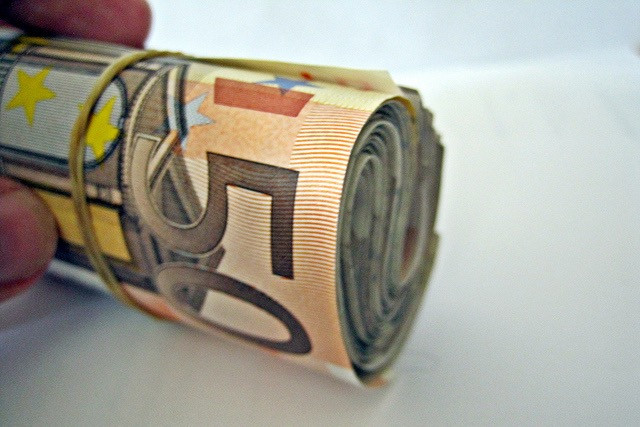The FT piece cited “more evidence” of the country’s “role as a centre for money-laundering and outright tax fraud.”
At the heart of this claim are 2016 figures from the European Central Bank showing that the Luxembourg Central Bank is responsible for nearly 9% of all euro banknotes in circulation. Where €3bn would be expected for a country of this size, €96bn had been issued since the paper currency came into being in 2001, said an 8 March article by Bloomberg which formed the basis of the piece in the FT. This amount is similar to the cash issued by large countries such as Italy and France.
This money will have been withdrawn from Luxembourg banks, with the notes ultimately provided by the Luxembourg Central Bank. Is this proof of the country’s complicity in financial crime, or are there innocent explanations?
Bank secrecy
The Financial Times article suggests the culprit is the country’s wealth management industry facilitating tax evasion. Indeed, when Luxembourg introduced banking secrecy in 1981 this encouraged international clients to use the country as a tax haven. Many of the transactions were cash based, both for deposits and withdrawals.
Most clients were motivated by the desire to avoid taxes, but banking secrecy also provided an opening for international criminals. However, EU anti-money laundering rules were introduced in 1991, and they have been tightened regularly since. The Luxembourg authorities are keen to enforce these rules, not least in order to avoid bad publicity. This has made Luxembourg a bad option for financial criminals.
Nevertheless, the country continued to provide opportunities for the likes of the fabled “Belgian dentist” to squirrel cash away from the tax authorities. Luxembourg managed for many years to resist EU and international pressure to clamp down on this practice. Then the global financial crisis struck, and the government realised it could hold out no longer. As of 1 January 2015 an EU directive ended strict banking secrecy. Information about the financial holdings of non-residents is now automatically communicated to tax offices in clients’ home countries.
Boom in banknotes
There is evidence to suggest that this ending of fiscal secrecy led to a boom in the distribution of notes in Luxembourg. For example, a 2015 article by Bloomberg pointed to a 15% increase in the issuance of cash in Luxembourg in 2013 alone. As the article suggests, it is probable that much of this was due to clients seeking to circumvent coming tax transparency rules. Banks would have issued cash, which could then be stored or repatriated.
Thus, rather than this surge in cash being a sign that Luxembourg is a tax haven, it appears to demonstrate the opposite. It is no longer possible to keep savings away from tax authorities in a bank account or using basic investment products. This is all about the “closing of banking accounts, probably with relatively small amounts, by foreign residents,” said Pierre-Henri Conac, a law professor at the University of Luxembourg speaking to Bloomberg. Given that wealth management contributes such a large proportion of this country’s national income, the effect on the statistics is magnified.
Cross-border influence
This is probably the over-riding reason for the inflated cash-circulation figures, but there are other contributory factors. Nearly half (45%) of the workforce do not live in Luxembourg, resulting in substantial amounts of cash being taken into Belgium, France and Germany each day. This effect is magnified by a German cultural preference for using cash rather than cards. The European Central Bank data shows that more than half of euros in circulation were issued in Germany. This preference for cash is shared by many Luxembourgers.
Also, when residents go shopping across the borders most of the paper money withdrawn in Luxembourg and spent abroad will not return.
Despite the Financial Times website commentary, there is little evidence to suggest that there is more than the average amount of financial crime in Luxembourg.
